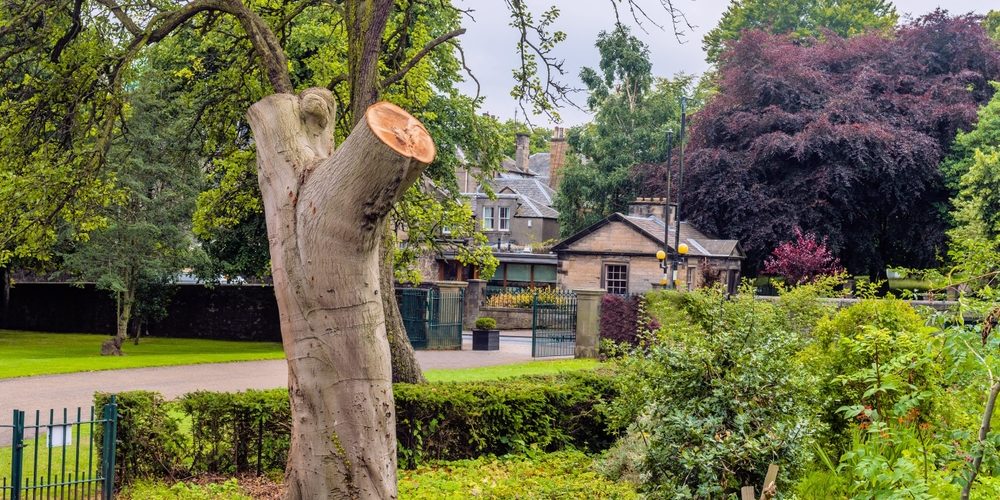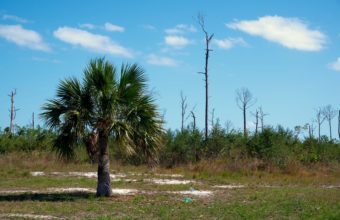Cutting all the branches off a tree, a practice often referred to as “topping” (when referring to the upper part of the tree) or “pollarding” and “coppicing” (when done according to specific traditional methods), is generally seen as harmful or controversial depending on the context and method used.
Each of these practices has different implications, purposes, and outcomes for the tree…
Topping
- Harmful Effects – Topping is considered harmful and is not recommended by arboriculture professionals. It involves cutting large branches or the top of the tree to stubs, which can lead to significant stress, decay, and increased susceptibility to pests and diseases. Topped trees often experience rapid, weak regrowth that is poorly attached to the tree, making them more likely to break and pose safety hazards.
- Why It’s Done – Despite its negative effects, topping might be performed due to misconceptions about reducing tree size for safety, views, or sunlight. It usually results in more harm than good, leading to increased maintenance and potential risk over time.
Pollarding
- Traditional Practice – Pollarding is a traditional pruning technique used to manage trees in specific settings, like along streets or in formal gardens. It involves removing the upper branches of a tree to promote a dense head of foliage and branches at the top of the tree.
- Controlled Method – When done correctly, pollarding is started when a tree is young, and the cuts are made at the same points throughout the tree’s life, which can help prevent decay and ensure the tree’s health. It requires regular maintenance and knowledge of the tree’s growth patterns.
Coppicing
- Woodland Management – Coppicing is an ancient form of woodland management that involves periodically cutting a tree down to ground level to stimulate growth. New shoots emerge, and after several years, they can be harvested for various uses.
- Sustainability – This method is sustainable and increases biodiversity in woodland areas. It’s a cycle that can be repeated over many years, providing renewable resources for fencing, firewood, and other products.
Considerations
- Species Specific – Not all tree species are suitable for pollarding or coppicing. Some trees respond well to these practices, while others may not survive the process.
- Purpose and Outcome – The intention behind these practices varies, from aesthetic and landscape management to practical resource harvesting in the case of coppicing.
- Professional Advice – For topping, the overwhelming consensus is to avoid it due to its detrimental impact on tree health and safety. For pollarding and coppicing, these are specialized practices that should be done with understanding and care, preferably under the guidance of an arboriculture professional or someone experienced in traditional woodland management techniques.
Cutting all the branches off a tree without a clear, sustainable purpose and understanding of the method and tree biology can severely damage the tree and the ecosystem around it. Proper care, technique, and timing are crucial for the health of the tree and safety of the environment.




